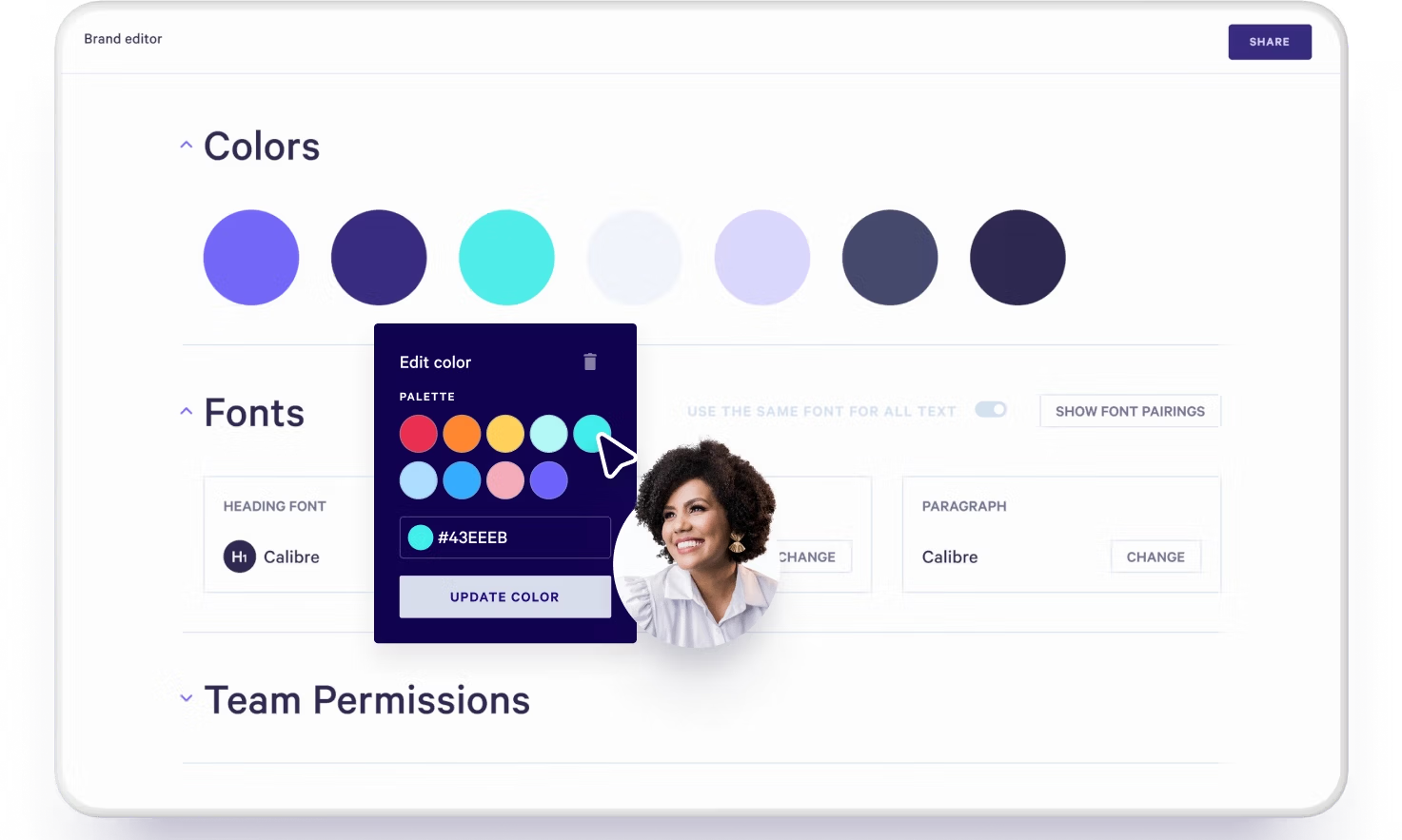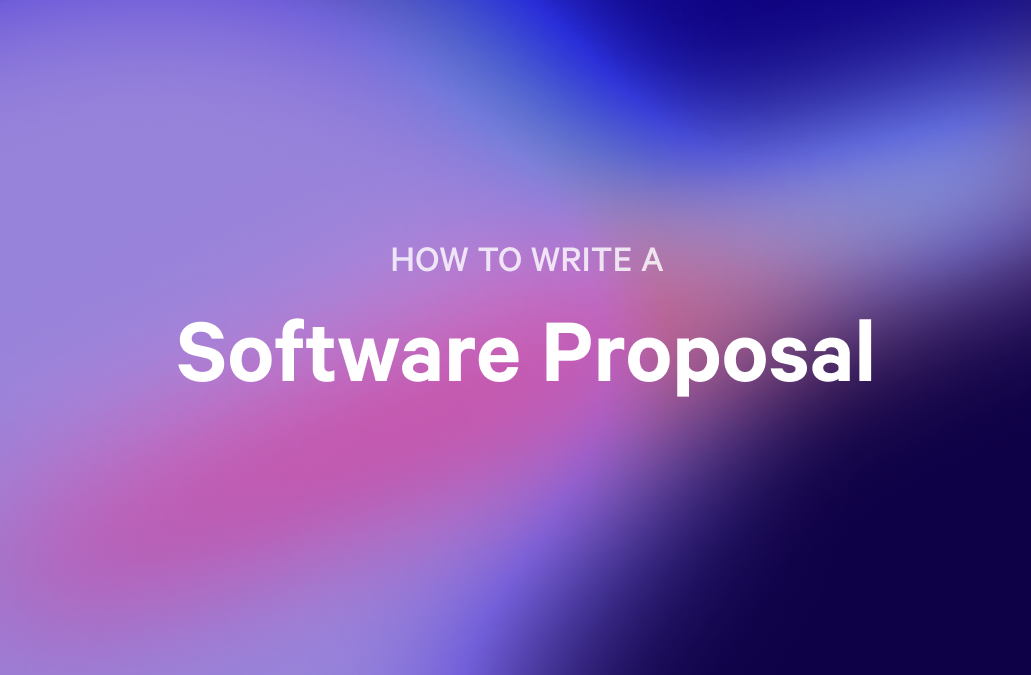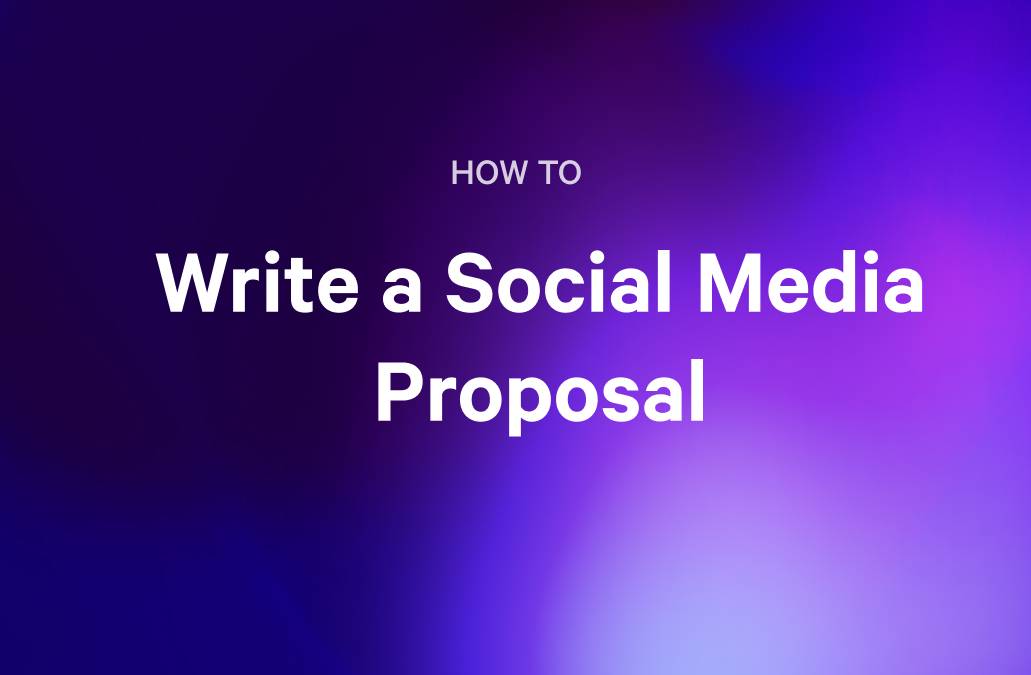Few things are more disheartening for sales reps than having potential clients ignore or reject their proposals. After spending hours crafting a proposal, researching the client's needs, and preparing for a pitch, having it end in rejection can be demoralizing.
A proposal cover letter that comes before a well-written and concise executive summary can help you start down the path of a better, more personalized, and more customer-focused sales process. It allows you to build a personal relationship with your potential clients before meeting them in person or virtually. But more than anything, it allows you to hook them with your ideas, strategy, and the value your business provides in a short, concise, and empathetic way.
How do you write proposal cover letters that not only don't get ignored but also get your potential clients excited about working with you?
We can help you answer that question and develop a process for creating a winning cover letter every time!
What is a proposal cover letter?
A proposal cover letter is a document sent with a proposal or bid to introduce the proposal and highlight its key points. It serves as a preamble to your proposal, and its main goal is to show that you understand the client's needs and demonstrate how your proposal will fulfill those needs.
This document is not a repeat of the executive summary of the proposal, but rather an opening letter that outlines value propositions and your competitive edge over other proposals.
In other words, your proposal cover letter should hook your prospects and make them want to open the sales proposal, where you dive into more detail.
Ideally, these cover letters shouldn’t be more than a page, and certainly under two pages.
The benefits of having a good proposal cover letter
It's easy to overlook the proposal cover letter because it doesn't sell, per se. It isn't included in the meat of your sales process, so it can be tempting to throw something together and move on.
However, a well-written proposal cover letter can make a huge difference in whether or not your proposal is read and ultimately accepted. Think of it this way: you wouldn't show up on a potential employer's doorstep without sending your resume and cover letter and waiting for them to invite you in for an interview, right? So why would things be any different with your sales process?
Here are some benefits of having a good proposal cover letter:
- Establishes credibility: The proposal cover letter lets you introduce yourself and your company, giving potential clients a sense of who you are and what you represent. It sets the tone for your proposal and can help establish trust with your potential clients.
- Shows understanding of client's needs: By addressing the client's specific needs in the cover letter, you show that you have taken the time to understand their business and tailor your proposal accordingly. This shows attention to detail and a genuine interest in their success.
- It's a great conversation opener. Breaking the ice in writing can be tough -- especially when you're in the early stages of building a relationship with a potential customer. But a proposal cover letter allows you to make a connection and start building a relationship with your potential client.
- Highlights key points: A well-written proposal cover letter allows you to highlight the most important aspects of your proposal in a concise and compelling way. This can help grab the reader's attention and encourage them to keep on reading.
- Sets the tone for your proposal: The cover letter sets the tone for your proposal, giving potential clients an idea of what to expect in terms of professionalism and quality. It also gives them a preview of what's to come in the full proposal.
- Differentiates you from competitors: A strong proposal cover letter can help set you apart from other proposals that may be vying for the same client's attention. It allows you to showcase your unique approach and value proposition, giving you an edge over competitors.
- Can help overcome objections: By addressing potential concerns or objections in your proposal cover letter, you can proactively address any doubts or hesitations the client may have before they even reach the full proposal. This can make a big difference in how your prospect perceives your services, the value you offer, and the mental objections they may have.

Easily create interactive, on-brand proposal cover letters and proposals with Qwilr
What should be included in a proposal cover letter
If you want to write a great proposal cover letter, there are some elements you want to ensure you hit every time. These include:
If you want to write a great proposal cover letter, there are some elements you want to ensure you hit every time. These include:
- Personalized greeting: Address the receiver by name
- Thank you note: Proposals are first and foremost a show of gratitude for the opportunity
- Value proposition: Highlight your unique abilities and experience that makes you the best choice
- Top-level approach: Outline what it’s like to work with you and what the issuer can expect throughout your partnership
- Positive conclusion: Express your eagerness to work with them
- Next steps: Mention how you’ll follow up
- Personalized signature: Add a human touch with the signature of the leading sales rep or sponsor
Best practices for writing a cover letter for proposals
If you don’t have a dedicated proposal writer (if you do—send them this!), then here are some tips for nailing the writing.
Research. And then research some more
If you want your proposal letter to really speak to your potential client, you need to do your research. Thoroughly understanding their needs, goals, and pain points will allow you to tailor your letter and proposal accordingly.
Some areas to look into to find out more about who your prospect is and what they really need include:
- Their company website
- Social media profiles
- Industry news and trends
- Competitors and their offerings
You will likely use this research for your sales proposal as well, so take your time and dive deep
Include personal touches
Your research should help you personalize your letter and show that you understand the client's specific situation and needs. This will help build trust and credibility with the potential client. Go beyond simply using your prospect's name and the name of their business; show your customer you did your homework and understand their needs.
One way to personalize your letter is by showing empathy towards your potential client's situation. This means acknowledging their challenges and expressing your understanding of their situation.
This can be done by referring to specific points they have raised during previous communications or information gathered during your research. By doing this, you show that you are not just interested in selling your service, but are genuinely concerned about their needs and are committed to finding a solution that works for them.
Another effective way to personalize your letter is by aligning your letter with their business goals. By mentioning how your service can help them achieve their objectives, you make your cover letter relevant and demonstrate your commitment to their success.
Whether it's increasing their sales, enhancing brand visibility, or improving operational efficiency - make sure you clearly state how your offering aligns with their goals.
Introduce yourself and your company in a brief but personable manner. This is where you can establish credibility and briefly mention your experience and successes.
However, be careful to avoid sounding overly boastful or formal. Remember, the goal is to build rapport with your potential client. It's essential to strike a balance between sounding professional and approachable.

Use Qwilr’s smart brand editor to make proposal cover letters that stand out
Explain the problem
One of the best ways to "get" your prospect is by showing them that you "get" their problem.
This means clearly explaining the challenges they are facing and how they are impacting their business. This will help establish a common ground between you and the client, making your proposal more relatable.
Show you have a plan
Once you have explained the problem, it's time to show that you have a solution. This is where you can introduce your service and explain how it solves their specific problems and addresses their needs.
Be sure to highlight any unique features or benefits of your offering and how they differentiate your company from competitors.
Adapt content to focus on your prospect and their needs
Again, this is not about mentioning their name as often as possible—it's about addressing their specific needs and how your proposal will solve their problems. Make sure to highlight the benefits they'll receive by choosing your company, and focus on all of their requirements that you meet.
It's easy to believe you need to showcase your skills, your achievements, and what your company does. But those should be just a side-story: your main focus is your prospect, they are the heroes of this story. You and your company are just their sidekicks.
Include elements to pique the reader's curiosity
The goal of your cover letter is to ensure your prospect opens your proposal and takes action. Be sure to include some of the most interesting points in your letter so that your prospect can't help but dive into your proposal. These could be proof points or an anecdote about how you solved a similar challenge for someone your prospect knows or someone in their industry.
If you have a dedicated designer, use visuals to convey information such as case study results or value propositions.
Use compelling language to make an impact
A proposal cover letter should be concise, no longer than one page. Use strong and compelling language to make an impact in a short amount of space. Your letter shouldn't be longer than your proposal, as the focus should be on the proposal and not overshadowed by a lengthy cover letter.
Avoid repetition
It’s an absolute no-no to create a proposal cover letter that simply echoes everything you have outlined in your proposal. The cover letter should stand on its own, as should the proposal.
Include a call to action
End your proposal cover letter with a clear and specific call to action, such as requesting a meeting or inviting the reader to go through a more extensive sales proposal. Make it easy for your potential customer to read your full sales proposal, book a meeting, or sign up for a trial.
Include contact information
Lastly, make sure to include your contact information in the cover letter. This includes your name, job title, company name, business email address, and phone number. This will make it easy for the potential client to contact you if they have any questions or would like to move forward with your proposal.
Streamline your proposal process with Qwilr
Business writing tends to be plagued with platitudes, shallow slogans, and an overuse of buzzwords. To stand out and make a lasting impression, it's important to avoid these pitfalls- not just on your website and ads but across all your business communications. And yes, that also includes the proposal cover letters you send out.
Focus on making your proposal cover letter personalized, concise, and client-focused. By doing so, you can showcase not just what your company does but also how it can address the specific needs of your potential client. This will help you build rapport with your prospects and increase the chances of securing their business.
If you want to take the steps we've outlined here and use them to create a template, Qwilr is at your service! You can use our software to create a cover letter template that can be easily personalized and tailored to each prospect's unique situation. Our tool can also be used to craft winning proposal templates fully loaded with eSignature and analytics capabilities. Want to see it in action? Book a demo to get started.
About the author

Brendan Connaughton|Head of Growth Marketing
Brendan heads up growth marketing and demand generation at Qwilr, overseeing performance marketing, SEO, and lifecycle initiatives. Brendan has been instrumental in developing go-to-market functions for a number of high-growth startups and challenger brands.



